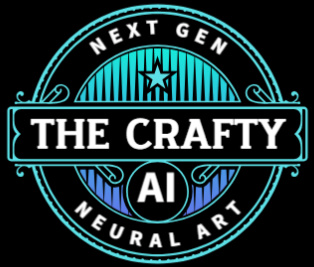www.thecraftyai.com
Understanding negative and positive AI prompts
One of the most powerful but often overlooked features in AI prompt writing is the use of positive and negative prompts. Especially in visual AI platforms like Midjourney, Stable Diffusion, or Leonardo AI, this technique can dramatically refine your results, giving you higher-quality images that match your exact vision.
If you've ever wondered how to improve image quality, remove unwanted details, or fine-tune styles and features, this is where positive and negative prompting come into play.
Understanding positive and negative prompts is essential for controlling the outcome of AI-generated content. Positive prompts describe what you want the AI to include, such as "vibrant colors," "a futuristic city," or "portrait in anime style." These guide the AI toward the desired subject, style, or atmosphere. Negative prompts, on the other hand, tell the AI what to avoid, helping filter out unwanted elements like "blurry background," "extra limbs," or "low quality." By balancing both types of prompts, creators can fine-tune their results, reduce errors, and achieve a more polished and accurate visual output.
What Are Positive and Negative Prompts?
Positive prompts describe what you want to appear in the output. Negative prompts describe what you do not want in the image. This two-part approach gives you more control over the final result, helping you reduce visual clutter, fix facial errors, and enhance realism or artistic quality.
Examples of Positive Prompts
These include specific subjects, styles, colors, emotions, and quality indicators. The more precise and vivid your language, the better.
Example Prompt for a Portrait:
“A beautiful woman with silver hair, cinematic lighting, shallow depth of field, realistic skin texture, 8K resolution, fantasy-inspired, in a glowing forest at twilight.”
Here, everything listed contributes positively to the desired outcome—subject (woman with silver hair), environment (glowing forest), and style (realistic + fantasy + cinematic).
Examples of Negative Prompts
Negative prompts filter out unwanted elements that may otherwise ruin the aesthetic or clarity of your image.
Add to the same prompt above:
Negative prompt: blurry, grainy, extra limbs, ugly, distorted eyes, low-res, watermark, duplicate, text, cropped head, deformed hands.
This tells the AI not to generate:
Weird body distortions
Low image quality
Artifacts like watermarks or random text
Unnatural facial features or limbs
How to Use Positive and Negative Prompts to Refine Your Results
Let’s go through a refinement process:
Step 1: Start with a Simple Prompt
“A woman in a fantasy setting.”
The result may be low-quality, generic, or include odd lighting or faces.
Step 2: Add Positive Details
“A beautiful woman with glowing green eyes, elven ears, flowing silver hair, magical forest, ultra-detailed, soft lighting, fantasy art style.”
Now it’s more specific, stylized, and imaginative.
Step 3: Add a Negative Prompt to Improve Quality
Negative prompt: cartoon, anime, blurry, text, watermark, extra fingers, deformed hands, cropped, bad anatomy.
This cleans up the image, removing common rendering issues in many AI systems.
Common Elements in Negative Prompts (For Image Generators)
Facial distortions:
“deformed face, extra eyes, warped expression”
Hand issues:
“extra fingers, missing fingers, bad hands”
Image clarity:
“blurry, low resolution, pixelated”
Style conflict:
“cartoon, sketch, low quality, anime”
Visual noise/artifacts:
“text, watermark, logo, signature”
Composition issues:
“cut off, cropped, headless, duplicate, mirrored”
Pro Tip: Use “Quality Tags” in Positive Prompts.
Many advanced users add quality-enhancing keywords:
“8K resolution”
“Unreal Engine”
“photo-realistic”
“sharp focus, professional lighting”
“masterpiece, award-winning”
Just as you tell AI what not to do, telling it to aim higher makes a huge difference.
Conclusion: Prompt Refinement is the Key to Better AI Images.
Using positive and negative prompts together gives you full control over your AI-generated content. Instead of relying on luck or endlessly retrying, you can guide the AI toward consistent, high-quality results, whether you're making digital art, product mockups, or printable posters.
Whether you're using Midjourney, Stable Diffusion, DALL·E, or other platforms, learning to master prompt refining is one of the fastest ways to level up your creative output.
© 2025. All rights reserved.

